There’s nothing more disheartening than seeing little or no improvement in your health after making big changes. It’s easy to give up when we clean up our diet, start an exercise program, create a healthy sleep environment, and address any ongoing ailments, and yet we see little reward. One cause we often overlook is the impact our home has on our health. While we focus on making it attractive and comfortable, we don’t often ask whether our home environment also supports our health.
New building standards are designed to make homes energy efficient. Many new buildings and homes ‘seal in the air’ to regulate the internal environment and reduce the use of carbon fuels for heating and cooling. But sealed buildings allow very little exchange of fresh outdoor air for the polluted indoor air. They can also have a dramatic negative impact of our health and we may not even be aware of it.
We’re all aware of how air pollution affects our health. So it can be pretty frightening to discover that the air inside your home is more polluted than the air outside, even in big cities. But this is exactly what is happening in homes and workplaces that are now tightly sealed to conserve energy. In 2009 the US Environmental Protection Agency stated that “The air within our homes can be seriously more polluted than the outdoor air in even the largest and most industrialized cities”.
This sealed environment means that any toxins inside the house, such as chemicals, mould and bacteria, remain trapped inside. The air inside homes can quickly become ten times more polluted than the air outside.
POLLUTANTS INSIDE THE HOME
Toxic chemicals can be found within our home in almost everything including furnishings, decor products, paint, pest control, ineffective cleaning products or methods, or even the actual building. They can also be a byproduct of mould, bacteria and more. These products release the toxic chemicals into the air and on to surfaces, creating indoor pollution.
- Carpet
- Fabric
- Paint
- Wall coverings
- Furniture
- Insecticides
- Cleaning products
In 1986 the WHO coined the term Sick Building Syndrome to describe illness that arises from living and working in sealed buildings with poor air quality. This problem has now become more common with the growth of energy efficient buildings and homes.
In developed societies we spend up to 90% of our time indoors. This is particularly concerning because we now spend most of our life in extremely toxic surroundings.
CHANGE THE INDOOR ENVIRONMENT
While there are many factors contributing to this problem of toxins in the home you can quickly and easily reduce the impact this toxic environment has on your health.
The answer is to introduce plants into the environment.
Research from the Environmental Research Laboratory of John C. Stennis Space Center showed that rooms filled with the right plants have 50% to 60% fewer airborne moulds and bacteria than those without plants. And it goes further.
Plants take in carbon dioxide and release oxygen. But apparently, plants can also suck highly toxic, volatile organic compounds and other chemicals out of the air. The plants grab and filter pollutants, transporting them down to their roots where they are transformed into food. House plants could be called the lungs and kidneys of the building.
Plants can remove up to 87% of air toxins over 24 hours. Research, NASA
HEALTH BENEFITS OF HOUSE PLANTS
Indoor plants can bring many physical and mental health benefits.
Filter Air
Research at NASA’s Space Center has shown that certain indoor plants purify the air and improve indoor air quality. Surprisingly they found that plants are able to remove up to 87% of air toxins over 24 hours. Plants absorb many highly toxic chemicals including formaldehyde, benzene, xylene and toluene released from furnishings and other items in the home.
Balance Humidity
The air in buildings with ducted heating dries out quickly, causing respiratory congestion and dry skin. Plants are ideal additions in these places as they balance humidity levels. House plants maintain the moisture levels in the air, keeping them high enough to reduce illness and at the same time, low enough to prevent mould formation
Reduce Illness
The Norwegian University of Agriculture found that indoor plants fight certain illnesses. Symptoms of the following health problems were all reduced.
- Fatigue by 20%
- Headache by 45%
- Sore/dry throat by30%
- Coughs by 40%
- Dry facial skin by 25%
Psychological Benefits
Other research has shown house plants have a psychological benefit, increasing self-esteem, improving mood, reducing stress, anxiety and depression and increasing feelings of calm, relaxation and optimism. With their ability to affect stress levels and reduce the incidence of health issues, indoor plants play a vital role in a society with rising incidence of chronic illness.
Mental and Cognitive Support
Being surrounded by indoor plants can also make you think better, as they improve memory, concentration and attention, as well as boost creativity. Placing one in your office space will improve your productivity as well as reduce the impact of the electromagnetic radiation (EMR) from your computer.
BEST AIR PURIFYING PLANTS FOR YOUR HOME
These are the top ten air-purifying plants as classified by NASA, along with their NASA rating in order of effectiveness.
- Areca Palm NASA purifying score – 8.5
- Lady Palm – 8.5
- Bamboo Palm – 8.4
- Rubber Plant – 8.0
- Dracaena – 7.8
- English Ivy – 7.8
- Dwarf Date Palm – 7.8
- Ficus Alii – 7.7
- Boston Fern – 7.5
- Peace Lily – 7.5
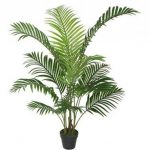 Areca Palm (Dypsis lutescens)
Areca Palm (Dypsis lutescens)
The top purifying plant in NASA’s study is the Areca Palm. It was the most efficient air humidifier guaranteed to keep the air moist as it removes toxins. It can totally replace the need for an electric humidifier
NASA purifying score – 8.5
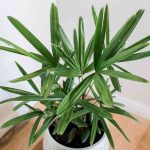 Lady Palm (Rhapis excelsa)
Lady Palm (Rhapis excelsa)
Ranking equal top with the Areca Palm, the Lady Palm is suitable for dry or humid climates.
NASA purifying score – 8.5
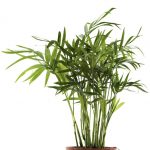 Bamboo Palm (Chamaedorea seifrizii)
Bamboo Palm (Chamaedorea seifrizii)
The Bamboo Palm performs well provided its needs are met. It likes to be kept moist but not wet and placed in indirect sunlight.
NASA purifying score – 8.4
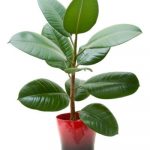 Rubber Plant (Ficus elastica)
Rubber Plant (Ficus elastica)
The rubber plant excels at removing chemical toxins from the air, especially formaldehyde and it needs less light than other plants
NASA purifying score – 8.0
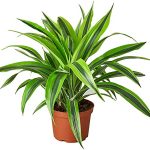 Dracaena (Dracaena deremensis)
Dracaena (Dracaena deremensis)
Next on the list is the dracaena which begins purifying the air as soon as you place it in the room
NASA purifying score – 7.8
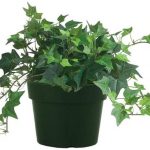 English Ivy (Hedera helix)
English Ivy (Hedera helix)
This plant is described as the fix for allergies by WebMD and is excellent at filtering out airborne mould.
NASA purifying score – 7.8
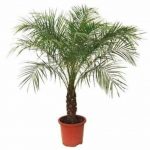 Dwarf Date Palm (Phoenix roebelenii)
Dwarf Date Palm (Phoenix roebelenii)
Not ranking as highly as some other palms the date palm is an attractive and effective way to lower the concentration of chemical toxins in the air.
NASA purifying score – 7.8
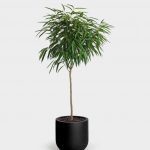 Ficus Alii (Ficus maclellandii)
Ficus Alii (Ficus maclellandii)
Not as effective as the rubber plant, it is still great for cleaning the air. Easy to care for, but wear gloves if you have a latex allergy.
NASA purifying score – 7.7
 Boston Fern (Nephrolepis exaltata)
Boston Fern (Nephrolepis exaltata)
Known for its time tested ability to remove mould and other toxins the popular Boston fern looks cool and relaxing.
NASA purifying score – 7.5
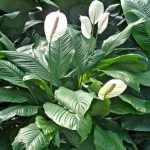 Peace Lily (Spathiphyllum)
Peace Lily (Spathiphyllum)
NASA found the Peace Lily was the most efficient at removing volatile organic compounds. Hardy and beautiful, the Peace Lily needs modest sunlight and a giant weekly soak in water. This one is my favourites, and I’ve had healthy Peace Lilies purifying the air in my home for years, only needing minimal care.
NASA purifying score – 7.5
There are many other wonderful plants which also do a great job at filtering toxins from the air but don’t make it onto NASA’s Top Ten List.
These include Devil’s Ivy (Epipremnum aureum), the extremely tough Spider Plant (Chlorophytum comosum), Snake Plant (Sansevieria trifasciata), Gerbera, and the gorgeous Chrysanthemum morifolium which happily filters toxins from the air in a sunny position with decent watering.
Each plant specialises in filtering a specific toxin or group of toxins better than others. So before you buy house plants do some research to determine which of the recommended plants suits your personal needs best.
For best results you need about 15 plants for a 15 square home or 140m² office to keep the air clean. But that depends to some extent on the size of your plants.
Make the message for your home ‘MORE GREEN – LESS STRESS’
DISCLAIMER
All information and opinions presented here are for information purposes only and are not intended as a substitute for professional advice offered during a consultation. Please consult with your health care provider before following any of the treatment suggested on this site, particularly if you have an ongoing health issue.

